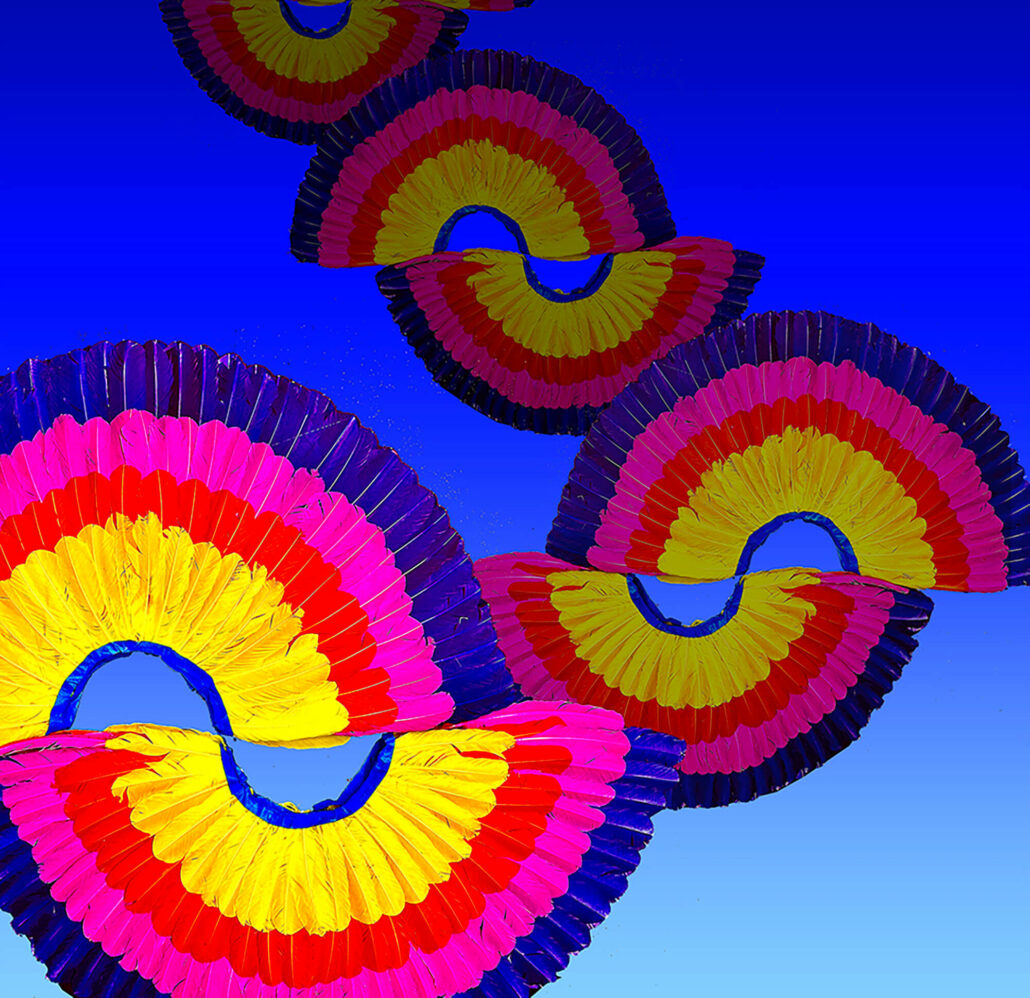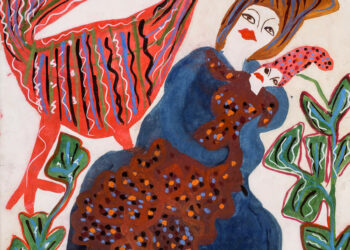Among the official collateral events of the 60th International Art Exhibition – La Biennale di Venezia, is the comprehensive exhibition and research project of the Mexican artist Betsabeé Romero, entitled ‘The Endless Spiral’, organised by the Museum of Latin American Art (MOLAA) from Long Beach. CA and curated by Argentine Gabriela Urtiaga, art historian and researcher, Chief Curator at MOLAA.

Betsabee Romero, Feathers of a Spiral Sunrise. Courtesy of the artist.
This exhibition explores Betsabeé Romero’s artistic practices through commissioned artworks and new installations, which result from the long-term relationship between the artist and the MOLAA Museum. Her work is part of the MOLAA Permanent Collection. At the end of the exhibition, as a Collateral Event of the 60th International Art Exhibition – La Biennale di Venezia, MOLAA will present this show in 2025 in Long Beach, California, USA.
The curatorial axes and concepts are expanded in different galleries of the Fondazione La Massa to explore the theme “Foreigners Everywhere” title of the 60th International Art Exhibition – La Biennale di Venezia.
We will present the show in different sections scattered throughout each of the galleries, creating a diverse presentation of this crucial topic. This will open ideas and concepts that are immersed in her body of work and make visible the dualities, tensions, conflicts, and fractures in our culture and history.
The artist developed a strong starting narrative that focuses on the experience of being a foreigner in the world and from the perspective of many who lack territory to seek refuge and survive. She speaks of those who seek and run, constantly bumping against the always foreign and exclusionary political and economic borders, from the mirror that does not recognise us, that doubts, watches, ignores, and distorts. From mirrors that do not include identities and genders beyond obsolete classifications and discriminations. From the home where violence prevails, wielded by those who have taken the baton, like a dagger that arbitrarily marks the borders that define their power as petty patriarchs, exercising it at the expense of the lives of women and children who inhabit it at their greatest vulnerability. From the wisest and most consistent communities that have had to hide to defend their sacred sites and save the world from the barbarism to which the logic of greed and excessive consumption has led us.
The exhibition is divided into six sections. The experience will begin through the installation “Signs to guide us into exile”, where the visitor will question the concept and experiences of migration before, during, and after our times. The visitor will comprehend how we can contribute to dismantling the horror and injustices in the community. Through “Identities”, security mirrors will cover the room that seeks us out and distort us. These are mapped and rigged mirrors with harsh, bordering lines, broken mirrors in a universe of the broken. “Barbed Borders” explores the suffering caused by the Borders. They are imposed lines that oppose necessity, survival, and understanding. Scars that bleed the world are lines that pursue us throughout life, inscribed on the body and engraved on the feet and the footprints we leave. They are cruel lines with sick and deadly charges.
“Rolling totem of rubber and gold” introduces the viewer to the mobility and wheel-based urban totem, hand-engraved wheels that were once instruments of memory. These cylindrical stamps imprinted history on all cultures of humanity. Western wheels changed the ride’s course, prioritising speed and forgetfulness to continue running over. These recycled tyres reclaim the opposite direction to modernity; instead of serving on highways and for the vehicles of power, they moved backwards, recycled slowly, and manually propelled to remember and make visible what speed had left behind so as not to see it anymore. A Rolling Totem of indigenous iconography from across the Americas, memories of embroideries and ceramics, steles, and stone objects from different regions and cultures. “At the vanishing point of shadows” reflects on culture as the home we carry within that survived the shadow of all powers. In the home, borders are also reproduced, and polarisations have divided even the bed in the familiar landscape. Finally, “Feathers of a Spiral Sunrise” journeys through an endless spiral, wisdom sowing and germinating in cycles, a rotating compendium of collective and endearing flights. A snail with circular and labyrinthine wings, a horizontal and infinite crest, architectural and ritual attire, a space where all can enter and inhabit.
Betsabeé Romero is an artist who has had the opportunity to live and produce her work in different countries, cultures, and contexts. In the curatorial statement, Gabriela Urtiaga writes: “Betsabeé is a nomadic spirit always looking for new experiences and perspectives with a focus on examining different essential and urgent topics for international audiences. She works with a strong consciousness of issues such as migration, gender roles, cultural traditions, religiosity, miscegenation, and individual and collective memory. Her method of transgressing the limits of different established categories and making visible the injustice around the world as a point of examination and a call for action is redefined as a community commitment through a dialogue between art, social justice, and heritage interacting for the common good. The artist developed a strong starting narrative that focuses on the experience of being a foreigner in the world and from the perspective of many who lack territory to seek refuge and survive.”
This exhibition is organised with Main Partners: William S. & Michelle Ciccarelli Lerach and Santiago García Galván.
It will also be accompanied by a publication/catalogue and exhibition brochure. COMEX, PPG, and HITN provided support for the exhibition.
Sunday April 21st at 2pm, open conversation between Betsabeé Romero and the curator Gabriela Urtiaga, followed by a guided tour at pm.
The exhibition will be on view from the 20th of April until the 1st of September 2024. For more information, please visit the Museum of Latin American Art (MOLAA).



